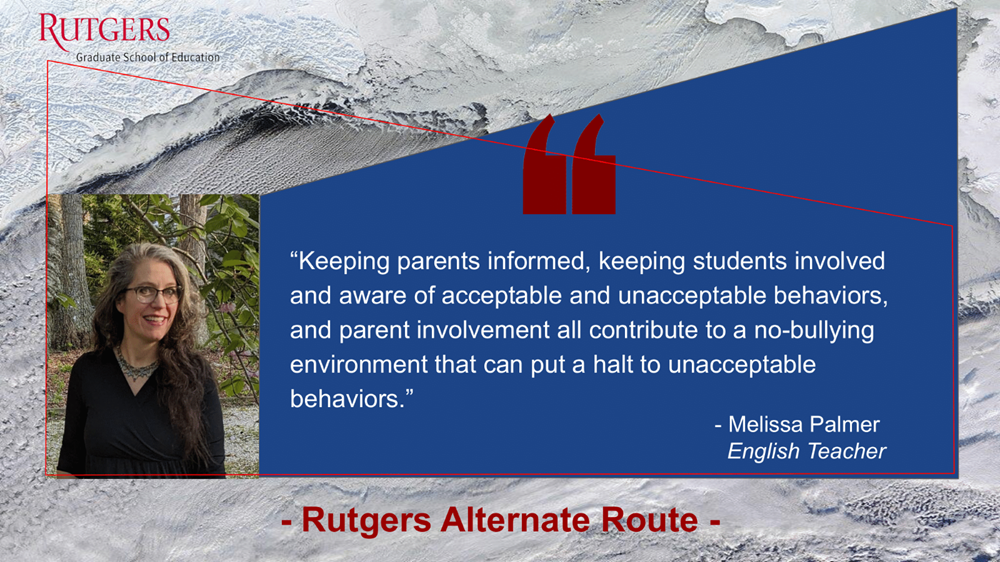How Teachers Can Create a Bully-Free Classroom

Bullying is a pervasive issue in schools across the globe, affecting millions of students each year. It can have devastating consequences, leading to emotional distress, social isolation, and even self-harm. As educators, it is our responsibility to create a safe and supportive learning environment for all students, one where bullying is not tolerated in any form.
Preventing bullying requires a comprehensive approach that involves educators, parents, and students working together. This blog highlights ways that teachers can create a safe and supportive learning environment for all students by implementing proactive strategies and fostering a culture of kindness and respect.
Establishing Ownership in Classroom Rules
A strong foundation in consistent classroom management is essential for preventing and addressing bullying.
The heart of eliminating or at least alleviating bullying in the classroom lies in a strong foundation of consistent classroom management. Consistency in rules that are developed together can help an educator establish a definite set of rules with which students can take ownership. When they have the opportunity to be part of the rule-making process, they are more likely to adhere to the rules that are set, follow them, and to respect the classroom that they have helped establish. Further, when students understand and respect the rules of the classroom, it creates a sense of order and predictability, reducing the likelihood of bullying behaviors.
Creating a Culture of Belonging & Growth
By promoting a culture that embraces imperfection and learning from mistakes, students are less likely to engage in negative behaviors toward others, fostering a more supportive and inclusive atmosphere.
According to the article “Stop Bullying by Creating a Strong Classroom Community,” creating a culture of belonging and growth is an integral part of classroom management that contributes to the regulation of behavior and the tone of the classroom. The author highlights the concept of leveling the playing field and introduces the practice of having students discuss anonymously their vulnerabilities, then take a gallery walk where they can share these ideas. This lets students know they are not alone. It establishes a sense that students share many common challenges and normalizes mistakes. When teachers take time to do this at the start of the school year, an environment is created where no one student feels perfect or the other side of that—inadequate. More positively spun, students see that everyone is fallible, including their own teacher. In that sentiment, there is a connection.
Model and Reinforce Kindness and Empathy
Bullying often stems from a lack of empathy and understanding. By creating opportunities for students to connect with one another, we can help them develop compassion and respect for their peers.
In the article 6 Ways Educators Can Prevent Bullying in Schools, there are several common sense and common decency ways educators can take an active role in making sure that certain behaviors will not be tolerated. At a time when, according to the National Center for Educational Statistics (2019), over 20 percent of students are reporting being bullied, these measures are more than valuable. They are necessary. For one teaching kindness and empathy should be a no-brainer for someone who has gone into the field of education. If a teacher is not practicing kindness and empathy, to begin with, they are in the wrong field. In this career path, the business of being a human being is the only business and in both instruction and practice a teacher who does not show and teach kindness and compassion at each turn is doing it wrong. This sounds judgmental because it is! How can students learn kindness and empathy if a teacher is not demonstrating these dispositions while teaching it?
Detect and Immediately Address Gateway Behaviors
Recognizing early warning signs of bullying, such as eye-rolling, back-turning, and exclusion, can allow us to intervene promptly and prevent these behaviors from escalating.
Another very important bullying prevention step is to recognize what is referred to as gateway behaviors. These are the kinds of behaviors that should make your blood boil if you see them happening. These gateway behaviors are a nice way to say what they really are, students being mean and getting ready to be meaner. Things like eye-rolling and back-turning, ignoring or excluding. Surprisingly, even causing physical harm to another student is listed among gateway behaviors. How causing physical harm is seen as a gateway, I have no idea. A gateway to what? Actual torture? Whatever the case, such behaviors must be stopped on the spot. Elizabeth Englander, founder and executive director of the Massachusetts Aggression Reduction Center, urges educators to respond to gateway behaviors. She emphasizes the importance of immediately disrupting behaviors these behaviors which lead to more serious acts of contempt. Do we actually need to study the fact that we shouldn’t be awful to one another? Sadly, the answer is yes according to Englander's research in bullying and cyberbullying, childhood causes of aggression and abuse, and children’s use of technology.
Invest Time Learning More with Recommended Resources
Start your professional learning experience with articles that discuss proactive tips for preventing bullying and the importance of involving parents.

“How to prevent bullying in the classroom: 4 Proactive tips for teachers”
In this article, several types of bullying are discussed but what is most interesting is that like the articles before, the key lies in communication. Both communicating consistent rules and being an active listener loom large in the role we as educators play in a bully-free classroom. Again, identifying unacceptable behaviors and nipping them in the bud is tantamount. Students need to know their teacher is advocating for them. Likewise, they need to be taught how to advocate for themselves which is another point the article emphasized.
“How parents, teachers, and kids can take action to prevent bullying”
The research provided in this article points to the other piece of the bullying puzzle that is as necessary as what happens in the classroom, and that is what happens at home. The importance of the parental role in the bully’s life is something I am glad has been illuminated. Just as educators need to disengage from and stop unacceptable behavior before it starts, so do parents. Children mirror what they see at home. They engage in behaviors that have been reinforced to them as acceptable. When a child comes from a home where parents let these behaviors slide, they come to school thinking that acting this way is all right. It is not. Keeping parents in the loop is important and as an educator sometimes you have to have difficult conversations with both the parents of the bullied child and the parents of the aggressors. This communication is necessary and can stop these behaviors on the spot.
The importance of communication and consistency is expressed again this article. Keeping parents informed, keeping students involved with and aware of acceptable and unacceptable behaviors, feedback, and parent involvement all again contribute to the big, beautiful no-bullying information superhighway that can put a halt to unacceptable behaviors.
Among the other ideas listed, such as assemblies and intervention, communication is key.

If you’re considering following your dream of teaching, Rutgers Alternate Route can offer you the support and training you need to succeed. Be sure to follow Rutgers Alternate Route on Twitter and sign up for Alternate Route’s monthly newsletter for more information and stories from the field of education.

 Melissa Palmer teaches English and Animation at CharterTech High School for the Performing Arts in New Jersey. An English major in college, Melissa used her knowledge of creative writing, literary arts, and animation to pursue a career in teaching through the Rutgers Alternate Route. The Seton Hall University graduate is driven by a passion for sharing her love for literature, connecting with students, and imparting life-enhancing lessons.
Melissa Palmer teaches English and Animation at CharterTech High School for the Performing Arts in New Jersey. An English major in college, Melissa used her knowledge of creative writing, literary arts, and animation to pursue a career in teaching through the Rutgers Alternate Route. The Seton Hall University graduate is driven by a passion for sharing her love for literature, connecting with students, and imparting life-enhancing lessons.





